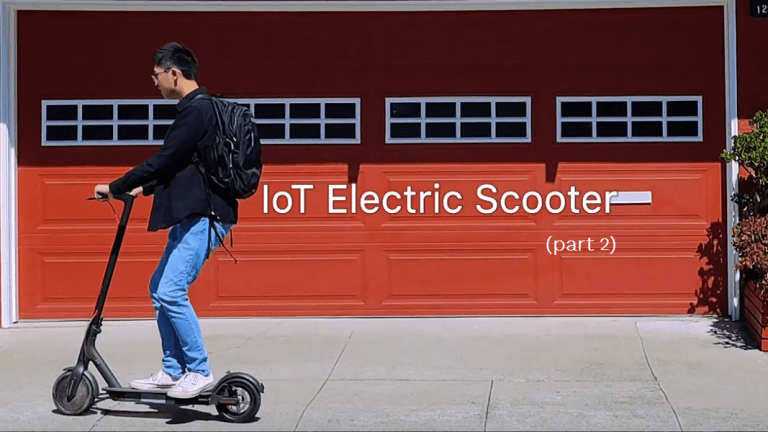How Hard is it to Visualize IoT Escooter Data Flow?

Read the first part of this four-part series here.
Whether its Bird and Lime, electric scooter companies are becoming an ingrained part of North American culture. In fact, according to a report by Lime, more than a quarter of riders connected to public transit during their last trip.
At our recent Cellular IoT Connectivity Hackster.io contest, we met two software engineer interns — Devin and Aaron — who wanted to build their own IoT-connected escooter prototype like Bird and Lime using Soracom products and services.
In the first article and video, they connected their Xiaomi M365 electric scooter to the cloud using a Soracom Cellular IoT Starter Kit — which includes a Raspberry Pi Zero — a Geekstory Beitian BN-180 GPS Module and SORACOM Air cellular connectivity in under an hour.
Data Collection and Visualization with SORACOM Harvest and Lagoon
The next step was to take the data collected from their escooter and transmit it to the cloud via SORACOM Air cellular connectivity where they could visualize using SORACOM Harvest and Lagoon.
Choosing cellular connectivity for this IoT project was no accident. When it comes to wide-range IoT applications that require a secure connection, it’s hard to beat cellular. Plus, with already existing infrastructure, there’s little to no upfront cost to get your project to market.
As it turns out, escooters are a perfect use case for cellular connectivity as they are mobile assets that can’t be tracked using a single connection point such as WiFi or Bluetooth.
Data visualization is a crucial component of IoT applications as it provides users with analytics that they can use to build actionable insights that improve their business model. This could be ways to conserve energy, cut costs, boost performance or eliminate unnecessary upkeep.
SORACOM Harvest and Lagoon are our way of greatly simplifying the data visualization process by enabling users to organize and categorize their data in intuitive dashboards.
Whether its moisture levels for a specific crop in a field of hundreds, a lone elevator that is in need of maintenance or — in this case — an escooter that is running out of battery or has reached the distance threshold where it needs repair, data visualization can help to ensure that no IoT project is too large to manage.
What we’ve enjoyed the most about watching Devin and Aaron build upon their escooter company is that they show the steps in a way that is easy for anyone to understand.
IoT technology shouldn’t be a high-barrier market. Like the Internet, it should be a platform that technical and non-technical people alike can use to breathe life into their exciting ideas.
At Soracom, we understand that no two projects are alike, which is why we have developed comprehensive IoT services that fit the needs of our customers.
Services like SORACOM Lagoon, which seamlessly connects to SORACOM Harvest for comprehensive data visualization and allows users to set alerts depending when certain customizable variables are met from the data that is gathered.
Escooters are just one of the many exciting IoT use cases that are growing in popularity around the world. However, with many of our colleagues based in San Francisco — the epicenter of escooter culture — it’s safe to say we have invested interest in the escooter movement.
We’re excited to watch as Devin and Aaron continue to improve upon their escooter business with new functionality and enhanced capabilities.
To read more about their IoT escooter project, check out their first article on Hacker Noon.



